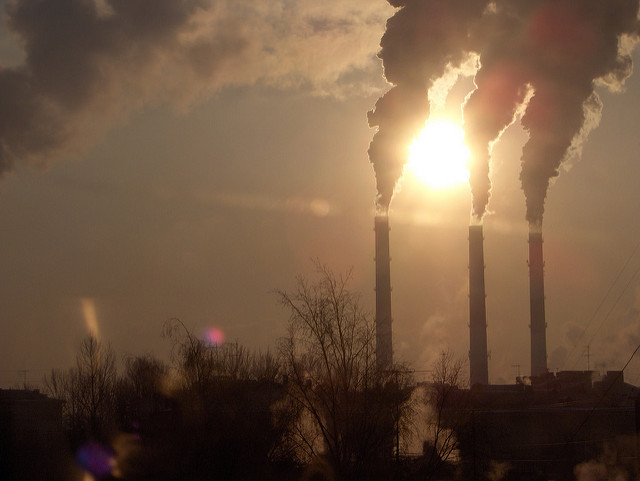
American manufacturers risk losing their competitive edge without clean energy advances.
The United Nations’ climate change report issued on Monday is nothing short of terrifying. But as scientists consistently exhort, we can stabilize our climate future — and another report finds that manufacturing can lead the way.
Supporting domestic manufacturing rather than outsourcing our pollution to countries with less stringent pollution standards is the first step in addressing America’s emissions, but there’s still plenty American manufacturers can do to increase energy efficiency. These improvements would not only support a cleaner environment, but also usher manufacturers into a market that promises substantial growth and new workforce opportunities.
“Working people are counting on us to reduce emissions and create high-quality jobs,” said AFL-CIO President Richard Trumka in a press release for the report.
As transportation and power become more energy-efficient, national attention should turn to continuing progress for industry as well, according to the report produced by Third Way, the AFL-CIO, and the Council on Competitiveness.
Industrial emissions represent the largest source of greenhouse gas emissions in America when including emissions from power generation to the sectors that use the energy.
“If we're serious about fighting climate change, we simply can't leave the industrial sector behind,” said Third Way Co-Founder and Senior Vice President Matt Bennett in the report’s press release. “We'll need a variety of low-carbon technologies and processes to aggressively cut carbon in this sector. But we also need to include manufacturers and the millions of Americans they employ in this policy conversation and make sure they can be part of the climate solution.”
The past success of steel and iron producers in dramatically reducing their industrial emissions shines as an example of what can be done. By implementing improvements in energy efficiency, these sub-sectors reduced their emissions by almost 60 percent between 1990 and 2016.
But many other American manufacturers have also spearheaded energy-efficient practices and continue to do so.
The vast majority of manufacturers, 93.8 percent to be exact, closely monitor their energy usage, according to a survey conducted by the National Association of Manufacturers. Putting research into action, 76 percent report implementing a recycling program.
State governments have also acted. In 2017, California recognized the importance of supporting industrial energy reduction in enacting the Buy Clean California Act, which requires that the steel, glass and other materials purchased for public works projects meet low-carbon standards, incentivizing investment in energy-efficient industry technologies.
But more must be done on the federal level to support industry efforts or the U.S. risks losing out, according to the report:
“When it comes to catalyzing innovation, the US fell behind eleven countries in Europe and Asia in terms of government investment in energy RD&D (as a percentage of GDP) in 2015. In particular, the US is falling behind in some of the most cutting-edge and important clean energy technologies for industry.”
The authors of Third Way’s report envision five pathways to reducing industry’s greenhouse gas emissions and energy waste:
- Implementing currently under-utilized co-generation systems, also known as combined heat and power (CHP), which generate electric power and thermal energy from a single fuel source;
- Investing in advanced manufacturing technologies that address material and energy efficiency in product and production;
- Strategically transitioning to clean energy fuels and electrification for certain processes, particularly in industrial heat, which represents the largest source of fossil fuel use;
- Innovating carbon capture and storage technologies and building more infrastructure to support implementation of these methods;
- Increasing production of low-emission gases and high-efficiency refrigeration and air conditioning equipment to reduce the release of hydrofluorocarbons, the fastest growing greenhouse gas globally.
Though manufacturers are on their way to achieving these advances, a clear national clean energy strategy is needed to maximize benefits.
Investment in clean energy technologies promises not only a cleaner future, but also a future that boasts in-demand manufacturing jobs.
However, manufacturers often face significant initial logistic and economic challenges in the process of developing and deploying new technologies. Thus, the authors of the report recommend government, industry and labor leaders consider policy measures that incentivize energy efficiency such as tax incentives or legislation like the Buy Clean California Act.
Reaching the vanguard of energy efficiency in manufacturing may not be an easy process, but it’s a goal that is increasingly critical to achieve.
